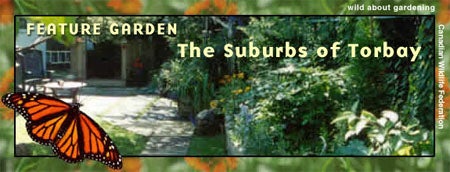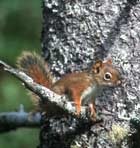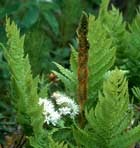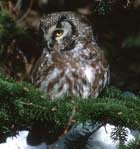
On a half-acre property in the suburbs of Torbay, Newfoundland, live Judith Blakeley and Helen Jones. Twenty-five years ago they moved into a newly constructed house surrounded by a gravel heap. With their goal of a beautiful lush garden and a belief in living in harmony with nature, they have converted this once barren ground into an oasis.

As a result of their efforts, Judy and Helen have enjoyed countless hours watching the many beautiful and animated creatures that share their outdoor home. This helps to satisfy their mutual appreciation for nature and for birds and wildflowers, in particular. While Judy's interest grew from noticing the myriad spring flowers and birds that she and her dog passed on their daily walks, for Helen, it was through a camera lens that her interest deepened, becoming a source of pleasure and fueling the start of her photography business.
In the early years they visited local nurseries, rescued plants from areas slated for development, and let some surprise wild plants settle in. Gravel gradually became greenery and, after a few years, neighbouring wildlife started taking advantage of the shelter, food, water, and space afforded by this newly evolving habitat.

They primarily chose plant species native to the region. These include black and white spruce, balsam fir, tamarack, birch, cherry, mountain ash, wild raisin, saskatoon, iris, meadow rue, pitcher plant, and cinnamon fern.
Their many native trees, shrubs, and herbaceous plants provide year-round food. Grouse nibble on spring birch buds, robins enjoy the bounty of autumn berries, red squirrels store fir cones, butterflies sip nectar, bees gather pollen, and hares munch the branches of crab apple trees. There are lots of places to nest and perch and to find protection from cold winter winds. If a tree is dying or dead, but is not a danger, it is left alone. These dead or dying trees, otherwise known as snags, soon develop cavities through the loss of branches or excavation by birds. These holes provide important shelter for numerous birds and other animals for roosting, hibernating, and even escaping predators. In addition to leaving these natural cavities, Judy and Helen have erected bird boxes and created brush piles and wild areas of tall plants for additional shelter. They supplement the food and water provided by nature with bird baths and feeders. Their cat Muffin is free to enjoy the garden as well, but on a leash (and still watched closely) to ensure the safety of all winged and furred neighbours.

The many regular winged visitors and residents include nuthatches, grosbeaks, woodpeckers, siskins, warblers, and even a boreal owl! Pollinating and other beneficial insects thrive in the garden, as do mammals. Judy and Helen enjoy visits from voles, shrews, red squirrels, snowshoe hares, and — back when the area was less developed — moose! Thanks in part to the stream at the foot of their property and the surrounding woods, Judy and Helen are also visited by weasels and minks. Despite this mix of wild neighbours, Helen and Judy find the damage minimal and rewards plentiful — even their vegetable patch is safe from unwanted raiding.

Of course, creating habitat was one thing; maintaining it is another. Helen and Judy's commitment to a healthy environment prompted them to garden the organic way — no pesticides, plenty of home-made compost, mulch, grass clippings left on the lawn (with the help of a mulching lawn mower), and no lawn watering (thanks, in part, to living in a boggy area). Pests are dealt with using a common-sense approach. The sawfly larvae that feed on the pine and tamarack trees are partly picked off by the birds that the trees attract and partly by spraying the trees with soap and water. Bindweed, an invasive plant that can strangle other plants, is hand-picked once noticed. Blackberries also keep bindweed under control, as Helen learned after she had pulled them out and a rise in bindweed ensued.
Judy and Helen are proud that they created a place where wildlife can safely reside year-round. As more and more wild spaces get developed and the barren green of lawns spreads across their region of Newfoundland and Labrador, such places are especially important.
The Canadian Wildlife Federation, through its Backyard Habitat Certification Program, acknowledges the efforts of Canadians who garden with wildlife in mind. This is just one of our many certified gardens. Click here if you are interested in certifying your property.
